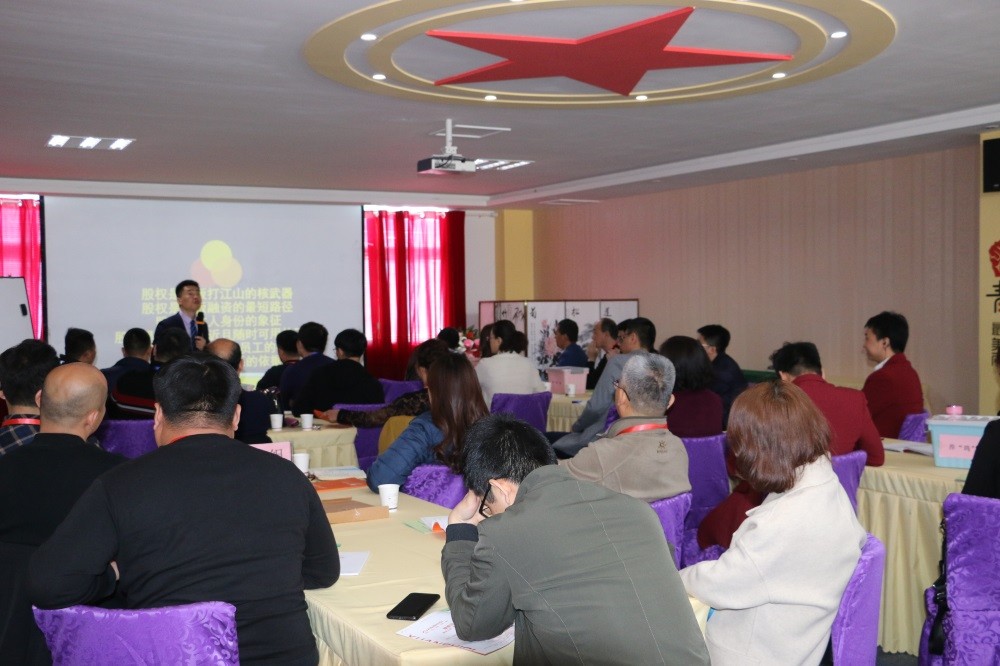

解析濟南股權架構設計分層原則
發布時間:2025-06-05 來源:http://www.yunjingwu.com.cn/
在濟南的商業生態中,股權架構設計分層原則正成為企業優化治理結構、實現長期戰略目標的關鍵工具。這一原則并非簡單的股權比例分配,而是通過構建多層級、功能化的股權架構,實現風險隔離、控制權集中、稅務優化與資本運作靈活性的平衡。對于濟南企業而言,分層設計既是應對復雜商業環境的必然選擇,也是提升企業抗風險能力與資源整合效率的創新路徑。
In the business ecosystem of Jinan, the principle of hierarchical equity structure design is becoming a key tool for enterprises to optimize their governance structure and achieve long-term strategic goals. This principle is not simply a proportional distribution of equity, but rather a balance between risk isolation, control concentration, tax optimization, and capital operation flexibility through the construction of a multi-level and functional equity structure. For enterprises in Jinan, layered design is not only an inevitable choice to cope with complex business environments, but also an innovative path to enhance their risk resistance and resource integration efficiency.
股權架構分層的核心邏輯,在于將企業股權拆解為不同功能的載體。在濟南,許多企業通過設立控股公司、主體運營公司、員工持股平臺等多層架構,形成“金字塔式”股權結構。例如,某濟南制造企業將生產、銷售、研發等業務分別裝入不同子公司,母公司作為控股平臺持有各子公司股權。這種設計使得某一業務板塊的風險不會傳導至整個集團,同時便于未來引入戰略投資者或進行資產重組。
The core logic of equity structure stratification lies in breaking down corporate equity into different functional carriers. In Jinan, many enterprises form a "pyramid" equity structure by establishing multiple layers of structures such as holding companies, main operating companies, and employee stock ownership platforms. For example, a manufacturing enterprise in Jinan integrates its production, sales, research and development businesses into different subsidiaries, with the parent company holding equity in each subsidiary as the holding platform. This design prevents the risk of a certain business sector from being transmitted to the entire group, while also facilitating the introduction of strategic investors or asset restructuring in the future.
分層設計的首要價值是風險隔離。濟南企業常面臨業務多元化挑戰,若所有業務由單一主體運營,一旦某環節出現問題,可能引發連鎖反應。通過分層架構,企業可將高風險業務與核心資產隔離。例如,某濟南建筑企業將工程承包業務放入子公司,母公司僅通過股權投資參與分紅,即使子公司出現工程糾紛,母公司資產安全仍可得到保障。
The primary value of layered design is risk isolation. Jinan enterprises often face the challenge of business diversification. If all businesses are operated by a single entity, any problems in a certain link may trigger a chain reaction. Through a layered architecture, enterprises can isolate high-risk businesses from core assets. For example, a construction enterprise in Jinan placed its engineering contracting business in a subsidiary, and the parent company only participated in dividends through equity investment. Even if the subsidiary had engineering disputes, the safety of the parent company's assets could still be guaranteed.

控制權集中是分層設計的另一關鍵。在濟南的創業生態中,創始人團隊往往需要通過較小股權比例實現對企業控制。通過設立有限合伙企業作為持股平臺,創始人可作為普通合伙人(GP)掌握決策權,而員工或投資人作為有限合伙人(LP)僅享有財產權。例如,某濟南科技公司通過此類架構,使創始人以20%的股權比例控制了整體表決權,既吸引了外部投資,又確保了戰略決策的獨立性。
Concentration of control is another key aspect of hierarchical design. In the entrepreneurial ecosystem of Jinan, the founder team often needs to achieve control over the enterprise through a small equity ratio. By establishing a limited partnership enterprise as a shareholding platform, the founder can hold decision-making power as a general partner (GP), while employees or investors as limited partners (LP) only enjoy property rights. For example, a technology company in Jinan has adopted such a structure, allowing the founder to control the overall voting rights with a 20% equity ratio, which not only attracts external investment but also ensures the independence of strategic decision-making.
稅務優化也是分層設計的重要考量。濟南企業可利用不同層級主體的稅收政策差異,實現整體稅負降低。例如,通過將知識產權、品牌等無形資產注入控股公司,子公司向母公司支付特許權使用費,可在合法合規前提下調整利潤分配。某濟南軟件企業采用此模式后,企業所得稅率從25%降至15%,顯著提升了資金利用效率。
Tax optimization is also an important consideration in hierarchical design. Jinan enterprises can take advantage of the differences in tax policies among different levels of entities to achieve overall tax burden reduction. For example, by injecting intangible assets such as intellectual property and brands into the holding company, subsidiaries can adjust profit distribution by paying franchise fees to the parent company under legal and compliant conditions. After adopting this model, a software company in Jinan reduced its corporate income tax rate from 25% to 15%, significantly improving the efficiency of capital utilization.
資本運作靈活性是分層架構的延伸價值。對于擬融資或上市的濟南企業,分層設計可提前規劃股權清晰性。例如,某濟南生物醫藥企業在Pre-IPO輪融資前,將研發板塊與生產板塊拆分為獨立子公司,既滿足了投資人“專精特新”的投資偏好,又為未來分拆上市預留了空間。這種架構使得企業在不同發展階段可靈活調整資本策略,避免股權過度稀釋。
The flexibility of capital operation is an extended value of hierarchical architecture. For Jinan enterprises planning to raise funds or go public, layered design can plan equity clarity in advance. For example, a biopharmaceutical company in Jinan split its R&D and production departments into independent subsidiaries before the Pre IPO round of financing, which not only met investors' investment preferences for specialization, refinement, novelty, but also reserved space for future spin off listings. This architecture allows enterprises to flexibly adjust their capital strategies at different stages of development, avoiding excessive dilution of equity.
在具體操作中,濟南企業需注意分層架構的合規性。股權層級設置需符合《公司法》規定,避免通過復雜架構逃避監管。同時,各層級公司的功能定位需清晰,防止出現關聯交易混亂、治理成本過高等問題。某濟南貿易企業曾因持股平臺設計不當,導致股東會決策效率低下,最終不得不進行架構重組,教訓深刻。
In specific operations, Jinan enterprises need to pay attention to the compliance of hierarchical architecture. The setting of equity hierarchy must comply with the provisions of the Company Law to avoid evading supervision through complex structures. At the same time, the functional positioning of each level of company needs to be clear to prevent problems such as confusion in related party transactions and high governance costs. A trading enterprise in Jinan once had to undergo a restructuring due to improper design of its shareholding platform, which resulted in low decision-making efficiency in the shareholders' meeting. The lesson learned is profound.
股權架構設計分層原則的本質,是構建與企業戰略相匹配的“股權生態系統”。在濟南經濟轉型升級的背景下,企業需根據自身行業特性、發展階段和資本規劃,動態調整股權架構。無論是制造業企業謀求產業鏈整合,還是科技型企業吸引人才激勵,分層設計都提供了可定制化的解決方案。通過科學運用這一原則,濟南企業不僅能提升治理效能,更能在激烈的市場競爭中構建起可持續發展的制度優勢。
The essence of the hierarchical principle in equity structure design is to build an "equity ecosystem" that matches the company's strategy. Against the backdrop of Jinan's economic transformation and upgrading, enterprises need to dynamically adjust their equity structure based on their industry characteristics, development stages, and capital planning. Whether it is manufacturing enterprises seeking industrial chain integration or technology-based enterprises attracting talent incentives, layered design provides customizable solutions. By applying this principle scientifically, Jinan enterprises can not only improve governance efficiency, but also establish sustainable institutional advantages in fierce market competition.
本文由濟南股權架構設計友情奉獻.更多有關的知識請點擊:http://www.yunjingwu.com.cn真誠的態度.為您提供為全面的服務.更多有關的知識我們將會陸續向大家奉獻.敬請期待.
This article is about Shandong Equity Incentive Friendship Dedication For more information, please click: http://www.yunjingwu.com.cn Sincere attitude To provide you with comprehensive services We will gradually contribute more relevant knowledge to everyone Coming soon.